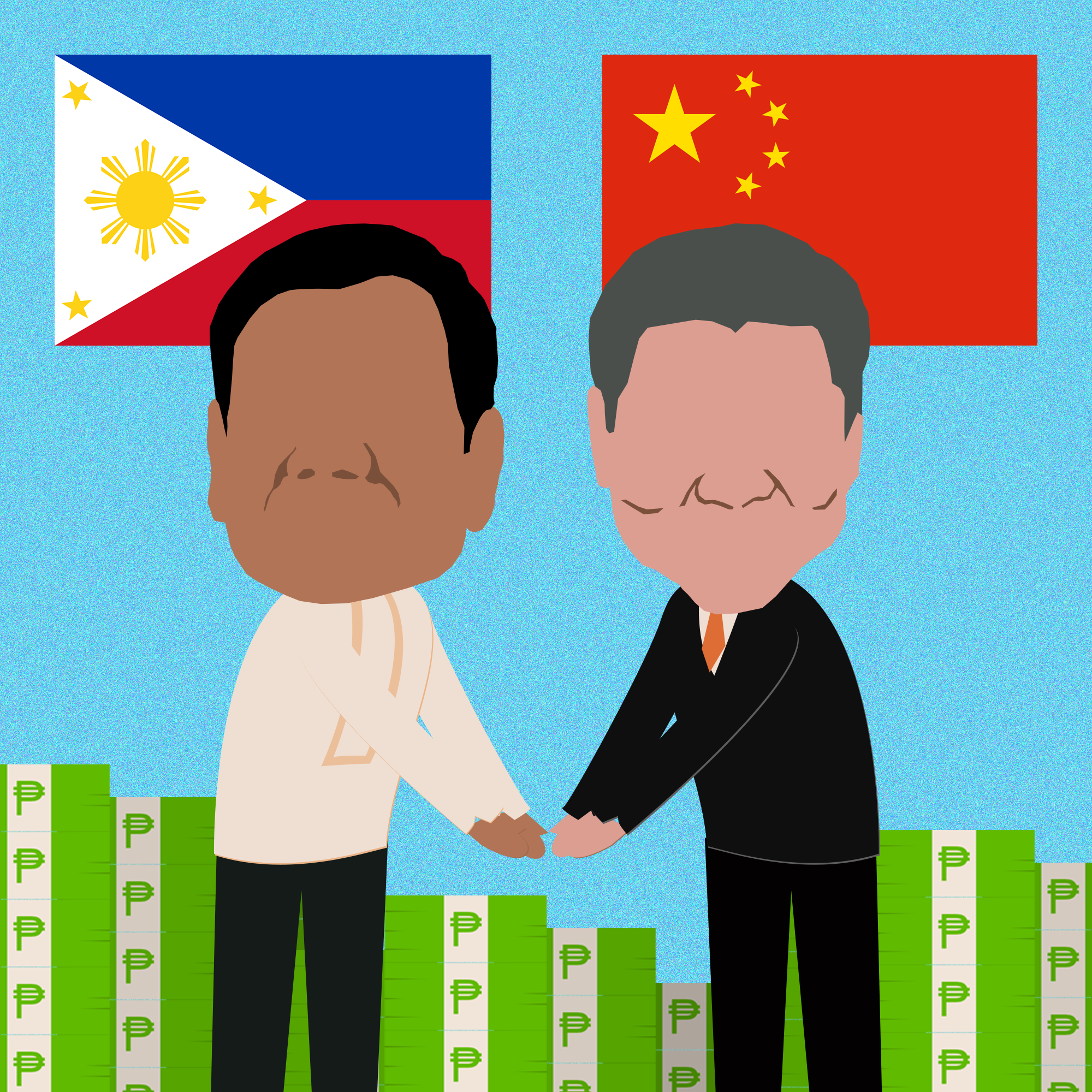IBON Features | COMMENTARY | By Arnold Padilla | The renewed support for the corporate takeover of water and energy sectors comes at a time that these policies are seriously being challenged by consumers
IBON Features— The World Water Day quietly passed by last March 22. It is a United Nations (UN) event that has been observed since 1993 to highlight the issues facing global water resources. For this year, the World Water Day focused on the water-energy nexus and how the world’s poorest survive without access to safe drinking water, adequate sanitation, sufficient food and energy services. Unfortunately, the occasion was also used by the UN to push for the further privatization and commodification of water and energy resources.
Seriously challenged
In the Philippines, the UN’s renewed support for the corporate takeover of water and energy sectors comes at a time that these policies are seriously being challenged by consumers with a better understanding of how oligarchic firms are squeezing them dry with impunity under privatization.
The controversy around the pass-on charges of private water operators Manila Water Company and Maynilad Water Services that included their corporate income tax, among others, forced the Metropolitan Waterworks and Sewerage System (MWSS) Regulatory Office (RO) to reject their bid for higher water rates. Meanwhile, the blatant price rigging in the power spot market compelled the Energy Regulatory Commission (ERC) to order the recalculation of the electricity rate hike sought by the Manila Electric Co. (Meralco).
In both cases, it was the vigilant public – through people’s organizations, consumer groups and progressive political parties – that challenged the onerous rate increases. Thus, for proponents of privatization who are grappling with legitimacy issues, the UN report could not have come at a better time.
Water report
In its 2014 World Water Development Report released on the eve of World Water Day, the UN said that 768 million people do not have access to an improved source of water, 2.5 billion do not have access to improved sanitation, while 1.3 billion are not connected to an electric power grid and 2.6 billion use solid fuel – mainly biomass – to cook. It noted that energy production accounts for close to 15% of water withdrawal but could increase to 20% by 2035 due to population growth, urbanization and changing consumption patterns. The UN warned that the challenge of meeting the demand for energy might well come at the expense of water resources and thus called for coordinated water and energy management policies.
Such coordinated policies, according to the UN, include revising pricing practices to ensure that water and energy are sold at rates that reflect their real cost and environmental impact more accurately. Furthermore, the UN argued that the massive scope of investments needed to develop durable infrastructure requires that the private sector play a major role in supplementing public expenditure.
Private participation, full cost recovery
International financial institutions (IFIs) notably the World Bank and the Asian Development Bank (ADB) have long propagated the scheme of private participation in infrastructure, most recently through so-called public-private partnerships (PPP), and the associated principle of full cost recovery. They have consequently played a central role in bankrolling neoliberal structural reforms in the water and energy sectors in many countries, mostly in the poor, debt-ridden Third World.
World Bank lending to the water sector from 2004 to 2011 has totalled US$34.8 billion, of which US$22.1or almost 64% are in the water supply and sanitation (WSS) subsector. Almost a quarter of WSS lending has been to the Asia and Pacific region.
Reflecting the real cost of water and energy under privatization and deregulation only means more expensive water and electricity bills. Proponents of these neoliberal policies peddle the distorted notion that pricing according to the true economic cost of water and power, or through full-cost recovery, addresses or even reverses their wasteful use and promotes the efficient and equitable use of resources.
The Dublin Principle – a product of the 1992 International Conference on Water and Environment held in Dublin, Ireland – for instance articulated the neoliberal notion that “water has an economic value in all its competing uses and should be recognized as an economic good” and that “managing water as an economic good is an important way of achieving efficient and equitable, and of encouraging conservation”.
Full-cost recovery means that consumers pay user fees that cover the entire cost of investment as well as the guaranteed profits of private operators including differentials in factors that could affect profits such as foreign exchange, fuel prices, inflation, and in some cases even so-called regulatory risks, among others. The real intent is to assure the profits of private business and protect them from risks to as they operate in these vital sectors with such great implications on the public interest and welfare.
PPP trends
Private investors already substantially participate in developing and operating water and sanitation and energy infrastructure. Data collated by the World Bank’s Private Participation in Infrastructure (PPI) online database show that from 1990 to 2012, 111 countries reported private investments in the energy sector with a total of 2,653 projects reaching financial closure worth about US$715.1 billion. In the water sector there were 814 projects worth US$69.3 billion in 63 countries during the same period.
Private participation in the energy sector continues to expand both in the number of projects and cost per project. Again using the PPI database of the World Bank, the annual average of PPI investment in the energy sector has grown almost four-fold between the 1990s and the 2010s while the annual number of projects has increased almost three-fold. The average cost per energy project also grew by almost 44% during the same period.
Meanwhile, private participation in the water and sewerage sector has slowed down between the 1990s and 2010s – the annual average of PPI investment dropped by 10%, the annual average number of projects fell by 51%, and the average cost per project declined by more than 40 percent.
This is explained by how several of the biggest urban water utilities were privatized in the 1990s, particularly in the Third World. The most notable were those in: Buenos Aires (Argentina) in 1993; Cancun (Mexico) and Gdansk (Poland) in 1994; Kelantan state (Malaysia) and Santa Fe province (Argentina) in 1995; Senegal, Cartagena (Colombia), and Aguascalientes (Mexico) in 1996; and Gabon, Cordoba (Argentina), La Paz–El Alto (Bolivia), Budapest (Hungary), Barranquilla (Colombia), Manila (the Philippines) and Casablanca (Morocco) in 1997.
After these however there was widespread public opposition to water privatization which sharpened by the contradiction between water as a human right and public good versus the neoliberal claim of water as an economic commodity that private firms can profit from. In recent years, there is an observable trend towards what some call “remunicipalization” or the reversal of water utilities privatization such as in: Paris, France; Dar es Salaam, Tanzania; Buenos Aires, Argentina; Hamilton, Canada; and in various municipalities in Malaysia.
Water privatization has started to pick up again after the 2008 global financial and economic crises though. From 2009 to 2012, private participation in water and sewerage has been growing by 28% per year in terms of investment cost. In 2012 alone, PPI investment in water and sewerage jumped by almost 54% although the bulk of it was accounted for by Brazil’s three large projects worth nearly US$2.5 billion – or almost 62% of the reported US$4.04 billion.
Trumpeting ’success’
Neoliberal apologists trumpet privatization as the solution to the lack of access to safe drinking water in the world, especially in poor countries, since state-run water utilities are supposedly too inefficient, bankrupt and corrupt to perform the task. Privatization champions point to the Millennium Development Goal (MDG) on water where the world has supposedly achieved the target of halving the proportion of population without access to improved sources of water five years ahead of schedule. But this obscures the reality on the ground that many poor communities are still without access to reliable potable water as “improved sources” in the MDGs could refer not only to individual household connection but also to public taps or standpipes, tube well or boreholes as well as dug wells.
The privatization of the MWSS in Metro Manila is a case in point. The private concessionaires Manila Water and Maynilad claim almost universal coverage of water supply in their service areas. However this claim includes bulk water connections – mostly in poor communities – where the safety and quality of water and of services are often compromised. Such bulk connections include setting up a single meter for several households, reaching a hundred in some cases. The responsibility of individually connecting to the so-called “mother meter” is up to the community (through its local association or cooperative). In some instances, rubber hoses are used to connect the households to the water supply system. In other cases, a common faucet is built from where the people fetch their water. The water concessionaires’ claim is also oblivious to how water rates are so high that they take up an increasingly disproportionate share of poor households’ budget.
Challenged by people’s experience, opposition
Claims of universal coverage and continuous supply of safe drinking water are bloated to give the impression of improved services. It is undeniable however that water rates in Metro Manila and adjacent areas have skyrocketed under privatization and effectively further marginalized those who do not have the capacity to pay. Since MWSS was privatized in 1997, the average basic tariff has already ballooned by 585% (Maynilad) to 1,120% (Manila Water).
This as the concessionaires passed on to the consumers billions of pesos in questionable charges including their corporate income tax, in charges for unimplemented projects, and the cost of advertising, promotion and donations on top of passed-on charges to account for inflation and foreign exchange fluctuations. These were done so that the firms could collect their guaranteed exorbitant profits. The arbitration process between the concessionaires and regulators over the rejected water rate hikes is being conducted away from public scrutiny and without consumer participation. This only affirms doubts that privatization can be made any less oppressive and unacceptable.
The policy regime of privatization that allows private, profit-oriented companies to take over economically strategic and socially sensitive sectors with negligible state intervention explains why water and power rates in the country are very high and among the highest in Asia. Endorsements from institutions such as the UN to continue such policies are constantly and increasingly being challenged by the people’s experience and opposition on the ground. IBON Features






